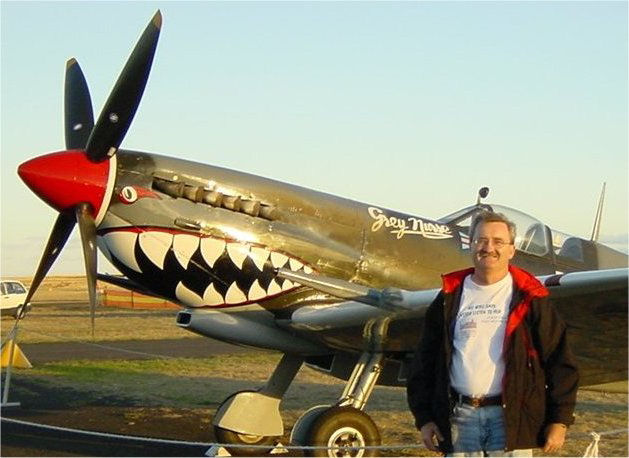Webmaster for the ozatwar.com Website
I was born in Townsville in 1948 and grew up playing in some of the remnants of WWII, but not realising why they were there. There were the numerous large igloo hangars near Duckworth Street and Dalrymple Road, the large WWII hangars and building at Garbutt airfield, and the large deserted US Army Air Command bunker at Ramsay Street, Garbutt which is still there!! And why were there shallow trenches in the paddock behind our house.
There were old rusty aircraft drop fuel tanks in the saltpan behind our house at Pimlico (now the Lakes area) and in other areas around Townsville. The older kids were lucky enough to locate the more intact drop tanks and turn them into small boats or (canoes) and use them on the weirs.
One of the teenagers in our street Geoffrey Nielsen told me that his parents had told him that a P-38 Lightning had made a forced landing in the saltpan behind our house during WWII. I thought he was pulling my leg, but many years later when my interest in Townsville?s military history developed I decided to see if this story was true or not. After reading Dr. Rod Cardell?s marvellous book "Wings Around Us" about the Stock Route airfield (Dalrymple Road), I discovered that the story was in fact true. The P-38 had taken off from the Stock Route airfield (Dalrymple Road) and made a forced landing in the saltpan where the lakes are now located. I was then determined to find out more about this crash and eventually I got enough leads to let me track down the pilot who was still alive at that time. I rang him one day and had an interesting discussion.
Townsville remained a military town after the war with Garbutt airfield being home to the Garbutt RAAF base. So while growing up in Townsville in the 1950's, one could hardly miss the numerous military aircraft flying around. Dakotas, Lincolns, Wirraways, Hudsons, and the occasional Mustang. In later years there were the Sabres, the Neptunes, etc.
I went on to join No. 1 Flight of the Air Training Corps at Garbutt airfield. Our parades were on a Friday night. I would ride my trusty pushbike from Pimlico to Garbutt. I used to go down to the RAAF Recruiting building in Sturt Street after school and fly the Link Trainer that was located in the basement. When I became too old to be in the ATC I joined the RAAF Reserve in Townsville. That Link Trainer is now in the RAAF Museum at Garbutt and still in perfect working order. I recently donated a maintenance manual for the Link Trainer to the fellow who looks after the Link Trainer at the Museum. He was a very happy chappy.
My father, Jim Dunn, was a member of the 42nd
Battalion and fought the Japanese in New Guinea and Bougainville during
WWII. He was camped in the
Townsville area for a while before being
shipped northwards to New Guinea. My father-in-law, John (Jan)
Goulevitch, DFC, was a member of the famous
460 Squadron RAAF and he
actually flew one mission in the very famous Lancaster (G) for George
which is housed in the Australian War Memorial. I
usually march with 460 Squadron for the Anzac Day marches in Brisbane.
After a number of years chasing my family history,
I eventually started a web page on 460 Squadron RAAF, then one on ?G?
for George. I then started
a few pages about Townsville during WW2.
These pages eventually became Townsville @ War. My interest in the P-38
crash caused me to realise
there had been a reasonable number of
aircraft crashes in Townsville during WWII, so I started a home page on
that topic. I now have over 2,000
aircraft crashes documented on my
web pages that happened in Australia during WWII. There are many many
more that I need to add and I estimate I
might approach 4,000 - 5,000 eventually.
My interest kept expanding, eventually covering
all of Queensland and before too long I widened the net even further to
cover all of Australia during WWII. I can assure you it will not expand any further.
I retired from work in September 2012 and my Australia @ War web pages continue to be a part time hobby.
My
research has made me realise that whilst the Southwest Pacific Theatre
of war was a very neglected theatre in the sense of written history,
what
did actually get written was mostly about the New Guinea side of
things. Very few authors and historians have covered much detail about
events
inside Australia during WWII.

